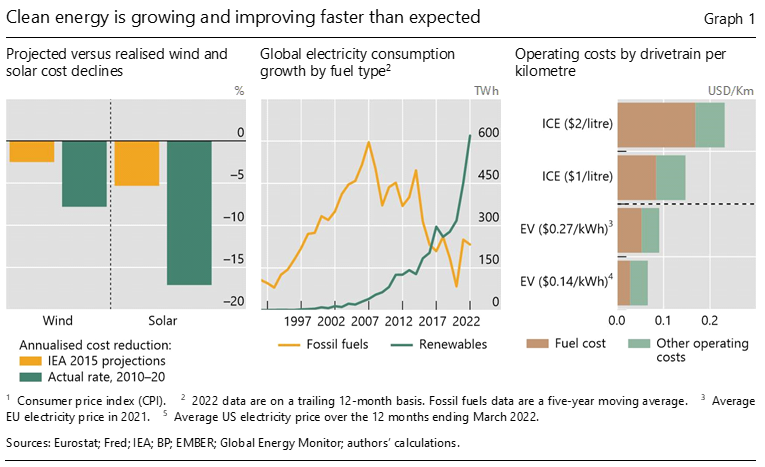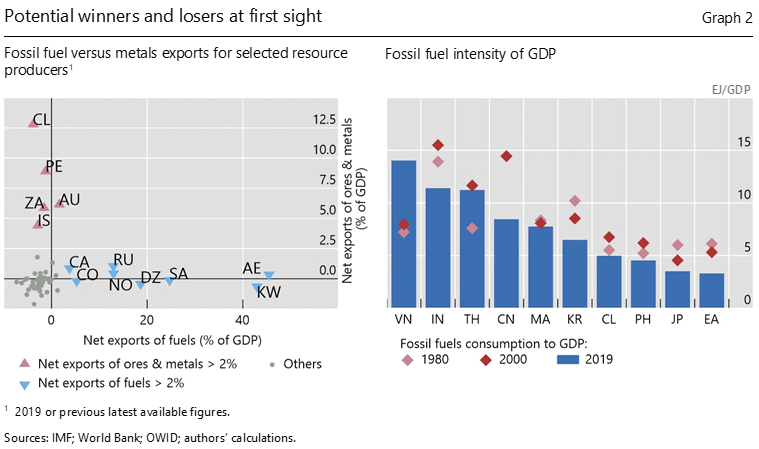References
Alberola, E and G Benigno (2017): “Revisiting the commodity curse: a financial perspective”, BIS Working Papers, no 609, February.
Americo, A, J Johal and C Upper (2023): “The energy transition and its macroeconomic effects”, BIS Papers, no 135, May.
Baumeister, C and L Killian (2016): “Forty years of oil price fluctuations: why the price of oil may still surprise us”, Journal of Economic Perspectives, vol 30, no 1, pp 139–60.
Bloomberg New Energy Finance (2022): Electric Vehicle Outlook 2022.
Boer, L, A Pescatori and M Stuermer (2021): “Energy transition metals”, IMF Working Papers, no 2021/243, October.
Bova, E, P Medas and T Poghosyan (2018): “Macroeconomic stability in resource-rich countries: the role of fiscal policy”, Journal of Banking and Financial Economics, vol 1, no 9, May, pp 103–22.
Bradsher, K (2023): “Why could dominate the next big advance in batteries”, New York Times, 12 April.
Corden, W (1984): “Booming sector and Dutch Disease economics: survey and consolidation”, Oxford Economic Papers, vol 36, no 3, November, pp 359–80.
Drechsel, T and S Tenreyro (2018): “Commodity booms and busts in emerging economies”, Journal of International Economics, vol 112, May, pp 200–18.
Ember (2023): Global Electricity Review 2023. April.
IEA (2021a): Renewables 2021.
IEA (2022): World Energy Outlook 2022.
IEA (2023a): World Energy Investment 2023.
IEA (2023b): Oil 2023.
IRENA (2022): Renewable power generation costs in 2021.
Kinda, T, M Mlachila and R Ouedraogo (2016): “Commodity price shocks and financial sector fragility”, IMF Working Papers, no 16/12.
Mercure, J, P Salas, P Vercoulen, G Semieniuk, A Lam, H Pollitt, P Holden, N Vakilifard, U Chewpreecha, N Edwards and J Vinuales (2021): “Reframing incentives for climate policy action”, Nature Energy, vol 6, pp 1133–43.
Persaud, A (2023): “Unblocking the green transformation in developing countries with a partial foreign exchange guarantee”, Climate Policy Initiative.
Schnabel, I (2022): “A new age of energy inflation: climateflation, fossilflation and greenflation”, panel remarks at The ECB and its Watchers XXII Conference on Monetary policy and climate change, Frankfurt, 17 March.
Tong, D, D Farnhan, L Duan, Q Zhang, N Lewis, K Caldeira and S Davis (2021): “Geophysical constraints on the reliability of solar and wind power worldwide”, Nature Communications, vol 12.
Way, R, M Ives, P Mealy and J Farmer (2022): “Empirically grounded technology forecasts and the energy transition”, Joule, vol 6, no 9, September, pp 2057–82.





